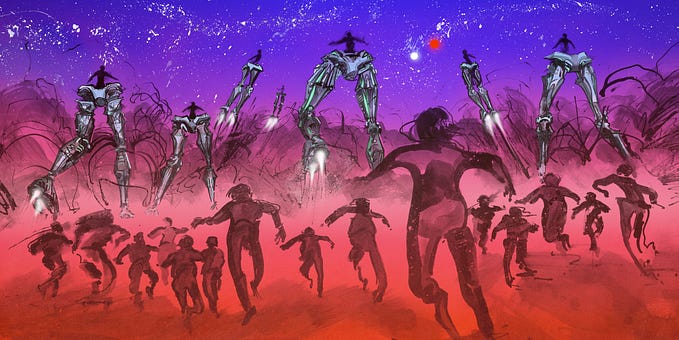Member-only story
A Superstar’s Stellar Fireworks Show
Eta Carinae exploded long ago and may have already exploded again. The Hubble Space Telescope gets the most detailed look yet.

NASA, ESA, N. Smith (University of Arizona, Tucson), and J. Morse (BoldlyGo Institute, New York)
Astronomers love Eta Carinae, a relatively nearby superstar that exploded nearly two centuries ago, and has since offered humans a ringside seat to a spectacular cosmic display. Now the Hubble Space Telescope has captured the highest-resolution image of the system ever captured, colored in red, white and blue and released just in time for — well, you guessed it.
The explosion of Eta Carinae, about 7,500 light-years away from Earth, was first noticed in 1838. By 1844 it had become the second-brightest star in the night sky, so luminous that seafarers came to rely on it for navigation. It has since faded, but beginning in 1990 Hubble and other space telescopes began to reveal a series of intricacies in the ever-expanding clouds of gas and dust that billow out in two directions.
Last year, researchers determined the material from the explosion zooms out at greater than 20 million miles per hour — fast enough to travel from Earth to Pluto in a handful of days.
Eta Carinae, first noted by Edmund Halley in 1677, is a two-star system (the second star was discovered in 2005). The larger star is massive, unstable, and nearing its death. Scientists believe that it will eventually explode even more violently and collapse into a neutron star or a black hole.
Exactly why Eta Carinae exploded before, and why it didn’t collapse, is a mystery. One idea is that there were three stars — packing the combined heft of 150 suns — and one was devoured, an event that would surely trigger a violent eruption.
Here’s why all this is being scrutinized so closely: The main star is thought to be using up its fuel quickly, and could be poised to blow even more spectacularly. “We know it’s close to the end of its life,” astronomer Armin Rest of the Space Telescope Science Institute said back in 2012. “It could explode in a thousand years, or it could happen tomorrow.”
In fact, it may already have done so. Because the system is 7,500 years away, the new photo shows events from 7,500 years ago — that’s how long it has taken light from…








